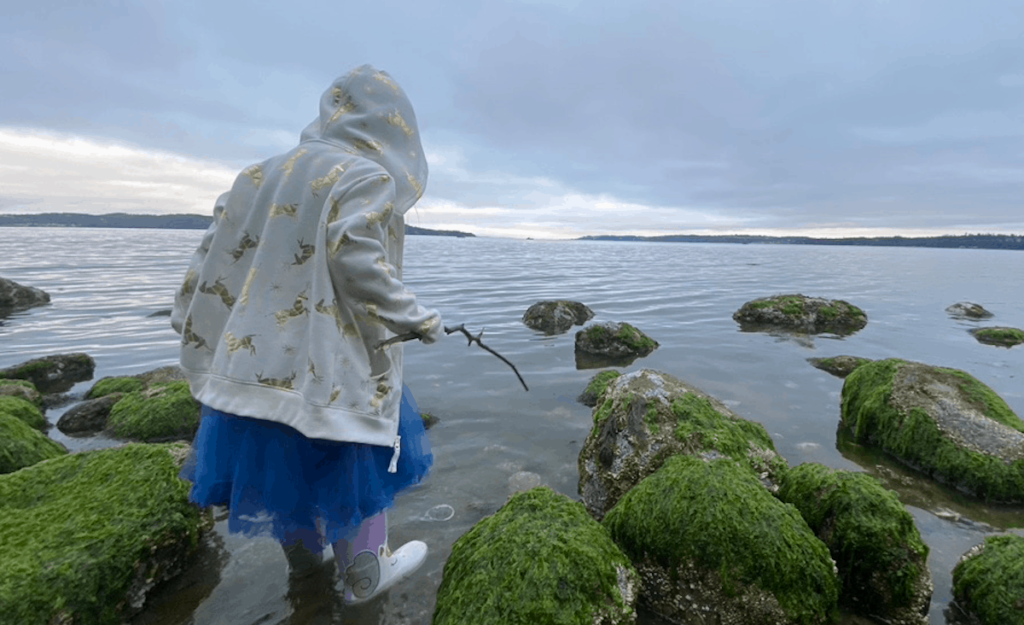How To Unblock Curiosity And Build Creativity

Curiosity might be the most important disposition of the new age. It guides the explorations of youth, it powers invention and creation, and fuels chapters of life long learning.
Cultivated through habits of inquiry, curiosity is easily dampened by stress—physical or physiological and blocked by a lack of permission—real or perceived. In an age where curiosity and creativity are more important than ever, pandemic challenges and inequitable conditions block employees and students from the luxury of curiosity.
The Building Blocks for Learning from Turnaround for Children is a framework for the development of skills children need for success in school and beyond. “Curiosity is at the top of the framework as a critical higher-order skill,” explained author Dr. Brook Stafford-Brizzard (now at CZI), “It’s more than wide-eyed wonder about the world, it’s the willingness and ability to explore, observe, take risks, follow the more difficult path.
![]()
All of the blocks in the framework contribute to supporting feeling safe to take risks. It starts with attachment and a sense of belonging, the self-awareness of triggers and blind spots, and the ability to self-regulate and tolerate the ambiguity.
“The effects of stress are many and they particularly affect foundational skill development (the bottom two rows of the framework) and this will affect the development of many of the higher-order skills including curiosity,” said Turnaround founder Dr. Pamela Cantor. “This is especially significant now.”
“When we think about COVID or any one of the many forms of traumatic experiences young people are having right now (whether in response to the national reckoning around systemic racism, a lack of connection to peer and school communities, or even gaps in their basic needs being met due to our economic crisis), we know that there will be an effect on learning,” said Cantor. “We will see it in children’s ability to focus and concentrate, on their working memory, how they regulate their emotions and behavior, and on their higher-order metacognitive skills like curiosity, civic identity, and self-direction.”
Curiosity is promoted by safety and security, belonging and attachment, permission, and opportunity–and that’s true at home, at school, and at work.
Curiosity Key to Innovation
“Curiosity is key to the invention of products and systems,” found Lemelson Foundation research. Especially when applied “in a sustained, disciplined, and programmatic way.”
This creativity–applied curiosity in a disciplined sustained way– combines the other top of the Building Blocks skills of self-direction and working with purpose (civic identity).
Successful “inventors are insatiable and unstoppable in their curiosity and their quest for ongoing improvements,” said Lemelson.
But curiosity and creativity aren’t for the rare inventor. Lemelson’s goal is “to convey that everyone can be inventive and invention is a process. Both invention and innovation derive from a healthy curiosity and an environment that supports asking questions and tinkering.”
Like Turnaround, to boost curiosity Lemelson points to a healthy environment free of fear with permission to ask questions. Unfortunately, this is rare at work. Surveymonkey found only 16% of employees believe curiosity is a reward–there’s little perceived value in asking questions or challenging the status quo.
Harvard’s Francesca Gino’s research produced similar findings, “In most organizations, leaders and employees alike receive the implicit message that asking questions is an unwanted challenge to authority. They are trained to focus on their work without looking closely at the process or their overall goals. But maintaining a sense of wonder is crucial to creativity and innovation. The most effective leaders look for ways to nurture their employees’ curiosity to fuel learning and discovery.”
Adobe research suggests that Gen Z students and teachers want more creativity in the classroom. Both agree it will be critical for career success and 93% of teachers recognize that creativity is going to play an integral role in solving many of the challenges the world faces today. And 92% of students said that developing intellectual curiosity is a priority.
A June Adobe study suggests that college admissions officers rate creative skills, with GPA and their interview, as one of the top three deciding factors.
If teachers, students, and employees get the importance of curiosity, it looks like we have a boss problem. Organizational leaders need to create safe spaces that permit curiosity. Schools need to use systems of tiered support to ensure that basic learner needs are met. They need brave leaders that focus on priority outcomes not just end of year grade level proficiency exams.
“Curiosity is much more important to an enterprise’s performance than was previously thought,” said Dr. Gino. “That’s because cultivating it at all levels helps leaders and their employees adapt to uncertain market conditions and external pressures.”
Four of Dr. Gino’s recommendations apply for any organizational leader: model inquisitiveness, emphasize learning goals, let employees (or learners) explore and broaden their interests, and have “Why?” “What if…?” and “How might we…?” days.
For more, see:
- Pandemic Opportunity: Rethink Education Accountability
- Reshaping Talent Development: Pandemic Edition
- The Biggest Source of Inequity Might be The Way We Fund Schools
Stay in-the-know with innovations in learning by signing up for the weekly Smart Update. This post includes mentions of a Getting Smart partner. For a full list of partners, affiliate organizations and all other disclosures, please see our Partner page.







0 Comments
Leave a Comment
Your email address will not be published. All fields are required.